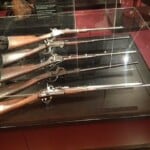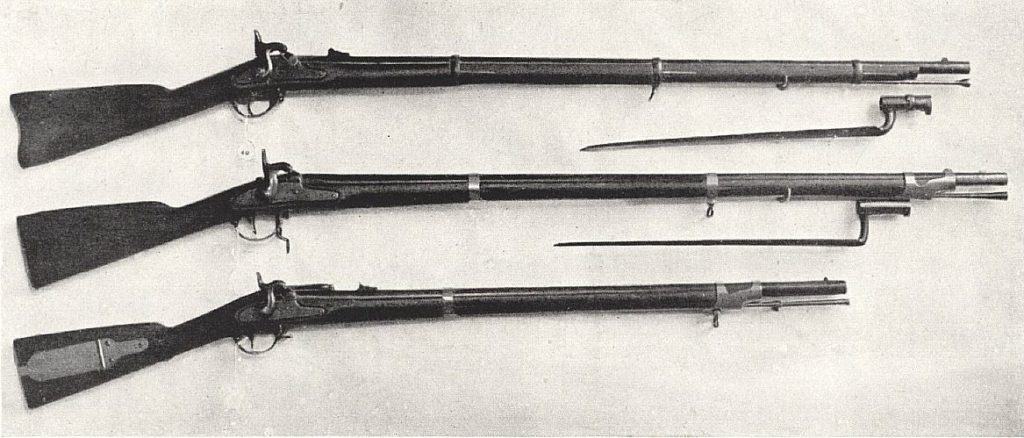
Introduction to the Spencer Carbine
The Spencer Carbine is a remarkable piece of American history, a weapon that played a crucial role in the transformative era of the Civil War. The Spencer holds an esteemed position in the evolution of firearms, marking a significant step forward from single-shot muskets to more modern repeating rifles.
Inception and Design
Named after its inventor, Christopher Miner Spencer, the Spencer repeating rifle, also known as the Spencer Carbine, was patented in 1860. Christopher Spencer, an innovator and engineer, sought to enhance the fire rate of existing firearms. His invention was one of the earliest adopters of metallic cartridges, which proved pivotal in the evolution of firearms.
The Spencer Carbine was a lever-action, breech-loading, seven-round capacity firearm. The cartridges were stored in a tube magazine in the gun's buttstock. It initially used the .56-56 Spencer rimfire cartridge, which was the first successful self-contained metallic cartridge. The caliber was later updated to .50 and .52 in subsequent models. The gun was 39 inches long, which made it more compact than the muskets of the time, and it weighed around eight pounds. The M1865 was updated again to provide a carbine model. Most modern reproductions are modeled after the M1865 and utilize .45 Colt.
Famous Historical Figures and Units
In August 1863, Christopher Spencer had a rare opportunity to demonstrate his new repeating rifle directly to President Abraham Lincoln. Lincoln, fascinated by modern technology and an avid shooter, was impressed by the rifle's performance and advocated for its usage in the Union Army.
The Spencer Carbine saw its first significant use in the Civil War by the Union Army, particularly cavalry units. One famous unit was the Michigan Brigade, commanded by Brigadier General George Armstrong Custer. By the end of the Civil War, around 200,000 Spencer Carbines and rifles had been manufactured, and the Spencer became one of the most famous firearms of the American Civil War.
Role in War
The Spencer Carbine's repeater mechanism allowed soldiers to fire multiple rounds before needing to reload, offering a tremendous advantage in firepower over single-shot muzzle-loading muskets and rifles. This made it particularly effective during cavalry engagements, where rapid fire was critical.
During the Civil War, the Spencer Carbine was a game-changer, allowing Union soldiers to maintain a steady and lethal hail of bullets. In the Battle of Gettysburg, the Spencer-armed regiments significantly outgunned their Confederate counterparts.
Comparison with Contemporaneous Firearms
Compared to other Civil War era weapons, such as the Springfield Model 1861 and the Enfield Pattern 1853, the Spencer Carbine provided a significant advantage due to its repeating capabilities. The Springfield and Enfield were both muzzle-loading rifles and required more time to reload.
However, the Spencer's ammunition was unique and not as widely available, which sometimes led to logistical issues. Additionally, the Spencer Carbine was more expensive to produce than the single-shot rifles, which limited its widespread adoption.
Predecessors and Successors
The Spencer Carbine was a significant departure from its predecessors, primarily muzzle-loading muskets and rifles, and was one of the early steps in the evolution towards modern repeating rifles.
The carbine's most direct successor was the Winchester Model 1866, an improvement on the Spencer design. The Winchester utilized a simpler and more reliable mechanism, along with the new centerfire cartridges, which could be reloaded, unlike the Spencer's rimfire cartridges.
Conclusion
The Spencer Carbine represented a significant advancement in firearm technology during the Civil War era. Its innovative design and impressive firepower gave Union forces a considerable edge over their Confederate counterparts. Despite being eventually replaced by more advanced designs, the Spencer Carbine's impact on the evolution of firearms and its role in the Civil War make it an important
Discussions on this can be found here:
If you know of any forums that should be on this list, please let us know here.



